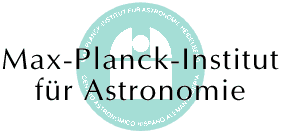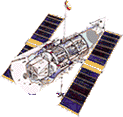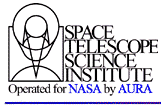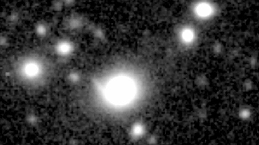
|

|

|

|

|

|
The GEMS program:

COMBO-17 data - HST GEMS data GEMS has imaged an area of 900 square minutes of arc on the sky with Hubble Space telescope's the Advanced Camera for Surveys (ACS). This contiguous field centred on the Chandra Deep Field South contains roughly 10,000 galaxies down to a depth of 24th magnitude in the R-band. The central part of the field (pink squares) was observed by the GOODS-project to an even fainter flux-limit. GEMS mainly concentrates on the outer regions of the extended Chandra Deep Field South. The COMBO-17 project determined redshifts in the range 0.2 < z < 1.2 for the 10,000 objects in the GEMS survey area. It gathered low resolution spectra using 17 medium band filters. In additon to redshifts, the spectra also provide spectral energy distributions (SEDs) from 3500 to 9250 Ångstroms. The mosaic of 9 by 9 ACS pointings in the F606W and F850LP filters together with the COMBO-17 redshifts will allow us to determine the evolution of galaxy structure over the last half of cosmic history. |
|